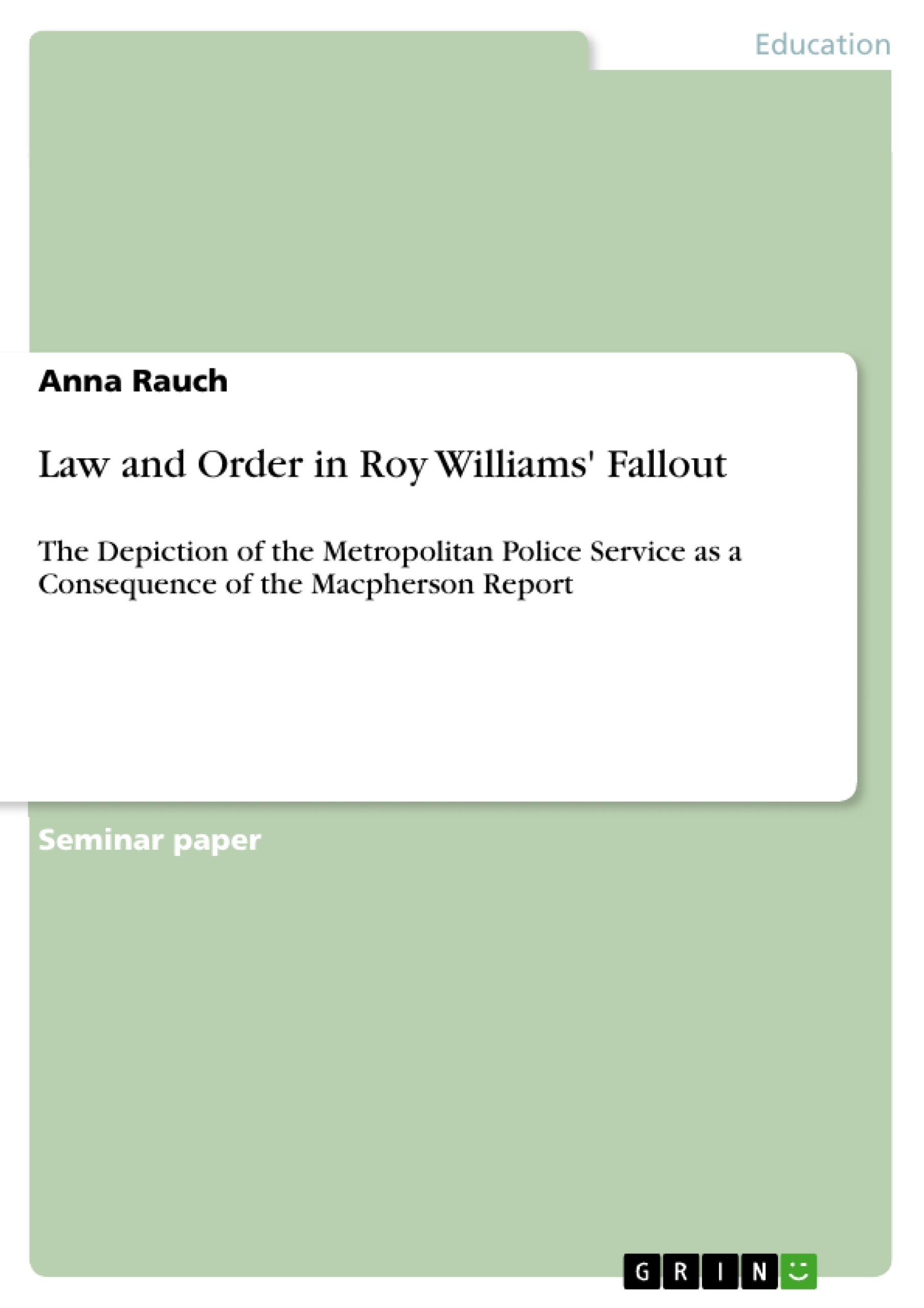Roy Williams’ play Fallout was written in 2003 and adapted for screen in 2008, contextualising knife crime amongst black youngsters in Great Britain. This play is especially based on the Damilola Taylor Case of 2000. Williams himself states that homicides amongst teenagers are “about greed – wanting a mobile phone or a pair of trainers and just taking them. Everything is done so quickly, without thought for the consequences." (qtd. in Mason, Telegraph.co.uk). Therefore, this “incendiary play” (Osborne 499) shows the fallout of a murder, its motives as well as the fight between two separate worlds, namely “a street society and a polite society” and the clash they provoke (Sierz 186). Further, it depicts the confrontation between the “predominantly white authority structure, as represented in the play by the Met and a predominantly black subculture of young people whose exclusion from mainstream society they experience as part hardship and part badge of pride” (Derbyshire 420). Thus, the play focuses on two worlds which co-exist, showing failures in society and the police system by revealing the “tension between those in power and those condemned to subordinate positions and second-class lives” (qtd. in Derbyshire 432).
This paper will mainly focus on the dominance of the Metropolitan Police Service (henceforth Met) in the play Fallout. Based on real events, such as the Stephen Lawrence Inquiry and the Damilola Taylor Case, the play is a “state of the nation play that explores some of the key issues that concern [everyone] living in twenty-first century Britain” (Royal Court Theatre 5). The paper will, therefore, provide a brief overview on both the murder cases and the role of the Met therein. In addition, the problematic issues concerning race within the system revealed by the Macpherson report in 1999 will also be discussed. The second part of the paper will deal with the depiction thereof in Roy Williams’ play Fallout through the analysis of the similarities between reality and the fictive plot as well as through answering the question in how far the depiction is influenced by current controversies in the Met. Furthermore, it will analyse the similarities and diversities of the characters Joe and Matt, two police officers, as personifications of political correctness within the Law and Order system.
Inhaltsverzeichnis (Table of Contents)
- Introduction
- Background Information
- Two Cases of Murder: Stephen Lawrence and Damilola Taylor
- The Macpherson Report
- Fallout as a Reaction on Current Debates on Law and Order
- Reality versus Fiction
- Matt versus Joe
- Conclusion
- Works Cited
Zielsetzung und Themenschwerpunkte (Objectives and Key Themes)
This paper explores the portrayal of the Metropolitan Police Service (Met) in Roy Williams' play Fallout, focusing on its depiction as a consequence of the Macpherson Report. It aims to analyze the play's context within the debates on law and order in Great Britain, highlighting its connection to real-life events, such as the Stephen Lawrence Inquiry and the Damilola Taylor Case.
- The impact of the Macpherson Report on law enforcement and societal perception of race and policing.
- The portrayal of racial tensions and societal divisions in Roy Williams' Fallout.
- The role of the Metropolitan Police Service in the context of the play, including its handling of investigations and the portrayal of police officers.
- The comparison between reality and fiction in the play's depiction of law and order.
- The representation of political correctness within the law and order system.
Zusammenfassung der Kapitel (Chapter Summaries)
The Introduction delves into the play's background, setting the stage for the exploration of knife crime among black youth in Great Britain. It connects the play to the Damilola Taylor case and outlines the key themes of the play, focusing on the clash between "a street society and a polite society" and the failures of the police system.
The Background Information section provides a detailed overview of the Stephen Lawrence and Damilola Taylor cases, highlighting the Met's shortcomings in both investigations. It underscores the impact of the Macpherson report, which declared the Met 'institutionally racist'.
Schlüsselwörter (Keywords)
The main keywords and focus topics of this paper include the Metropolitan Police Service (Met), racial tensions, institutional racism, the Macpherson Report, knife crime, street society, law and order, political correctness, and the portrayal of police officers in the play Fallout.
- Citar trabajo
- Anna Rauch (Autor), 2012, Law and Order in Roy Williams' Fallout, Múnich, GRIN Verlag, https://www.grin.com/document/272961



